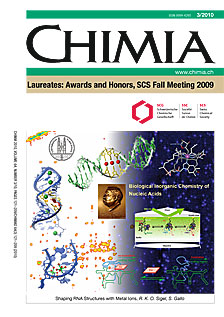Thermal Cleavage of the Fmoc Protection Group
FH – HES
DOI:
https://doi.org/10.2533/chimia.2010.200Keywords:
Dibenzofulvene, Fmoc protection group, High-temperature nmr, Peptide synthesis, Thermal cleavageAbstract
The Fmoc protection group is among the most commonly used protection groups for the amino function. A fast method for the thermal deavage of this protection group under base-free conditions without the need for dibenzofulvene scavengers is presented. The advantages of this method include straightforward testability by means of a simple high-temperature NMR experiment, usually high yields, and good selectivity towards the BOC protection group and t-butyl ethers.Downloads
Published
2010-03-31
Issue
Section
Columns, Conference Reports
Categories
License
Copyright (c) 2010 Swiss Chemical Society

This work is licensed under a Creative Commons Attribution-NonCommercial 4.0 International License.
How to Cite
[1]
S. Höck, R. Marti, R. Riedl, M. Simeunovic, Chimia 2010, 64, 200, DOI: 10.2533/chimia.2010.200.







